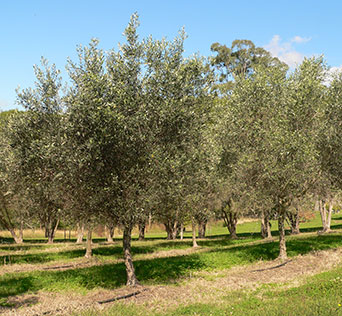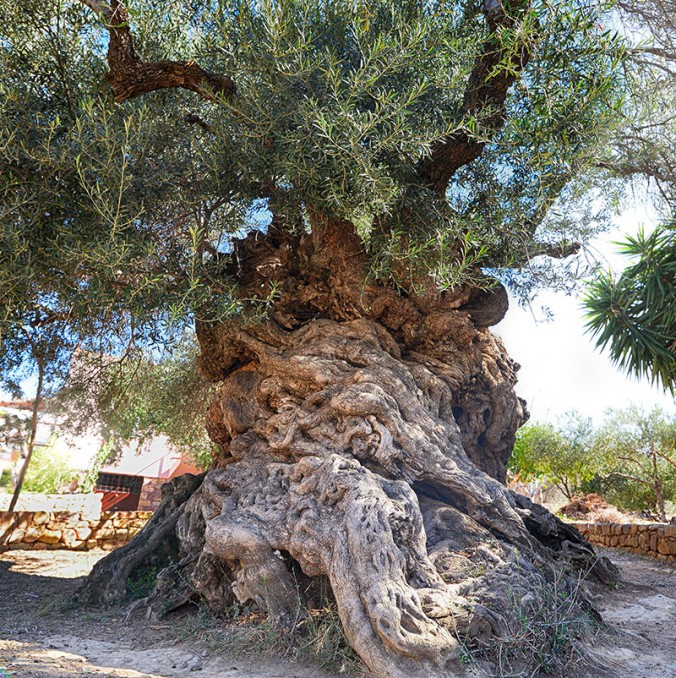Among the foremost trees in early human culture and commerce was the olive. From the dawn of recorded history the olive has enjoyed a status and prestige not shared by any other plant. Although many of the events in the early story of the olive are shrouded in mystery, the tree has been feted as the precursor to modern civilization.
It was the olive tree that was acknowledged as ‘the first of trees’. In the Bible’s book of Judges, Chapter 9, Verse 8 is written: “The trees went forth on a time to anoint a king over them; and they said unto the olive tree, Reign thou over us.” The olive has been the uncrowned king of trees, possessing tremendous significance to Christians. Not only has the cultivated olive been a bench-mark in humanity’s economic progress, it has been even more so in spiritual life.
It seems likely that cultivated olives existed at least 5000 years ago, perhaps even longer. For olive oil to have been an article of commerce worthy of note in Egyptian records, it seems reasonable to assume that it was produced in substantial quantities.
It seems apparent that olive tree culture played an enormous part in the earliest civilizations. Archaeologists have established that the wealth and power of the early Minoan kings, dating back perhaps to 5500 BC, was founded on and maintained by a trade in olive oil. A feature of the palace at Knossos was the Room of the Olive Press. The great jars in which olive oil was stored are still in existence.
It was not by choice, but from hard necessity that the ancient Jews and other Semites were nomadic people. They were always at the mercy of factors beyond their control, wandering in search of those ‘green pastures’ that figured in their idiom. Interpreting the story through the mists of antiquity, there came a moment when the Jews and probably other tribes of Israel, ceased their nomadic wanderings. It seems that the Jews and their Semite cousins learnt to cultivate the olive tree. The shade afforded by these olive groves allowed better pasture to grow than could be found in the arid plains. Under this shade, with walled terraces to hold the soil, they grew wheat and barley, cucumber and melon, garlic and onion, and leeks, lentils and beans.

Bunna Bunoo Olive Grove, Hunter Valley, New South Wales.
Small wonder that the olive trees were venerated and that the Old and New Testaments both make frequent references to their importance. The Jews were so impressed by this wonderful tree and by the blessings it had showered on them that they gave to the word anointment a significance in their lives which has survived through the ages. And a large part of Christianity, down to the present day, anointment with olive oil has particular symbolic significance.
When the Jews built their capital, Jerusalem, surrounded by the olive groves of the Promised Land, they built it at the foot of the Mount of Olives. Nearby was the Garden of Gethsemane, the scene of Christ’s betrayal. The very name Gethsemane, stems from gath-semen, which means an oil press, an olive oil press.
If we believe that the Mediterranean was the cradle of modern civilization, it was a cradle built of olive wood. Every race of people that made a contribution to early civilization in the West – Egyptians, Cretans, Phoenicians, Hellenes, Carthaginians, Arabs and Romans – had the olive tree as the common denominator.
Most of the geographic expansion of the olive tree took place in pre-historic times. It is believed that the same Greeks who took the olive to southern France also took it to Spain and Portugal.
Large-scale olive tree cultivation did not reach North America until 1870-80 when California began to think in terms of agriculture after the heyday of gold rushes. Today, the industry is well-established there and prospering with some 20,000 hectares of olive groves.
For about two centuries olive trees have been growing in Australia. They were probably first planted in groves around 1805 at Parramatta near Sydney. Varieties of olive trees have been planted in most states and territories. South Australia and Victoria are the states where most of the planting has occurred.
